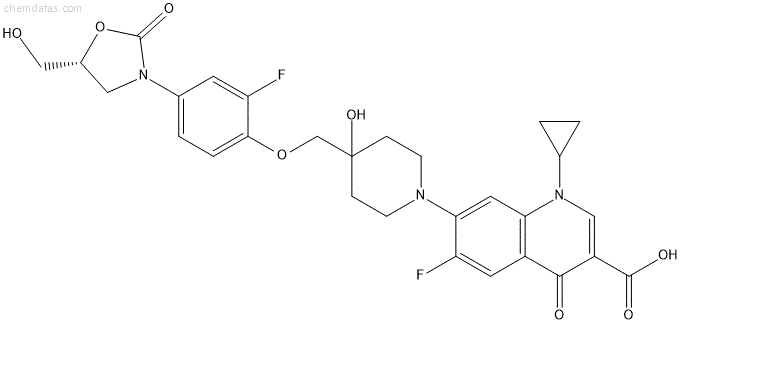All AbMole products are for research use only, cannot be used for human consumption.

Cadazolid is a new antibiotic in development for the treatment of Clostridium difficile-associated diarrhea. Cadazolid is active against all (including linezolid- and moxifloxacin-resistant) Clostridium difficile strains (MIC90 0.125, range 0.03-0.25 mg/L). The cadazolid geometric mean MIC is 152-fold, 16-fold, 9-fold and 7-fold lower than those of moxifloxacin, linezolid, metronidazole and vancomycin, respectively. Both cadazolid dosing regimens rapidly reduce Clostridium difficile viable counts and cytotoxin with no evidence of recurrence.
| Cell Experiment | |
|---|---|
| Cell lines | C. difficile |
| Preparation method | Experiments to assess the effects of cadazolid and comparator antibiotics on C. difficile toxin formation were done by determination of toxin A and B concentrations in stationary-phase cultures of toxigenic C. difficile |
| Concentrations | 0.3% (vol/vol) DMSO |
| Incubation time | 24 h |
| Animal Experiment | |
|---|---|
| Animal models | Hamster model of CDAD |
| Formulation | 0.5% [wt/wt] methylcellulose containing 0.05% [wt/vol] Tween 80 |
| Dosages | 10 mg/kg |
| Administration | gavage |
| Molecular Weight | 505.55 |
| Formula | C29H29F2N3O8 |
| CAS Number | 1025097-10-2 |
| Solubility (25°C) | DMSO ≥ 90 mg/mL |
| Storage |
Powder -20°C 3 years ; 4°C 2 years In solvent -80°C 6 months ; -20°C 1 month |
| Related Antibiotic Products |
|---|
| Puromycin-d3
Puromycin-d3 is the deuterium labeled Puromycin. Puromycin dihydrochloride is the dihydrochloride salt of puromycin. Puromycin is an aminoglycoside antibiotic that inhibits protein synthesis. |
| BSH-IN-1
BSH-IN-1 is a potent and covalent inhibitor of gut bacterial recombinant bile salt hydrolases (BSHs) with IC50s of 108 nM and 427 nM for B. longum BSH (Gram positive) and B. theta BSH (Gram negative), respectively. |
| AAA-10
AAA-10 is an orally active gut bacterial bile salt hydrolases (BSH) inhibitor, with IC50s of 10 nM, 80 nM against B. theta rBSH and B. longum rBSH respectively. |
| Gut restricted-7
Gut restricted-7 (GR-7) is a potent, covalent and orally active pan-bile salt hydrolase (BSH) inhibitor. Gut restricted-7 has a tissue-selective and is restricted to the gut. Gut restricted-7 decreases gut bacterial BSHs and decreases deconjugated bile acid levels in feces of mice. |
| N-Hydroxypipecolic acid
N-Hydroxypipecolic acid (1-Hydroxy-2-piperidinecarboxylic acid), a plant metabolite and a systemic acquired resistance (SAR) regulator, orchestrates SAR establishment in concert with the immune signal salicylic acid. N-Hydroxypipecolic acid accumulates systemically in the plant foliage in response to pathogen attack. N-Hydroxypipecolic acid induces SAR to bacterial and oomycete infection. |
All AbMole products are for research use only, cannot be used for human consumption or veterinary use. We do not provide products or services to individuals. Please comply with the intended use and do not use AbMole products for any other purpose.


Products are for research use only. Not for human use. We do not sell to patients.
© Copyright 2010-2024 AbMole BioScience. All Rights Reserved.
